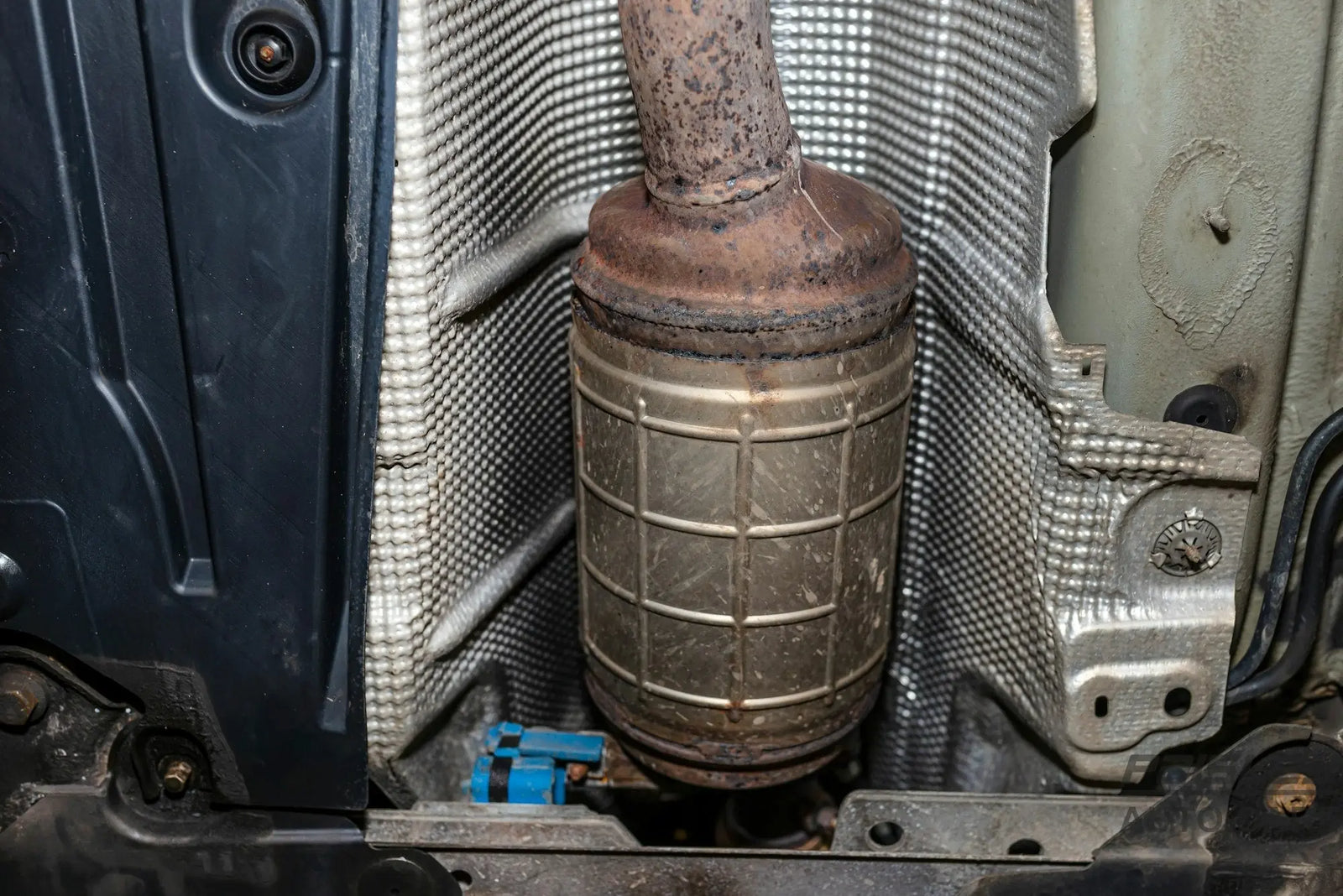What is a Diesel Particulate Filter (DPF)?
A Diesel Particulate Filter (DPF) is a critical component in modern diesel vehicles, designed to reduce harmful emissions. Specifically, it filters out particulate matter (PM) or soot that is produced during diesel combustion before these particles can be released into the atmosphere. DPFs have become essential since diesel engines, while efficient and durable, emit higher levels of nitrogen oxides (NOx) and particulate matter compared to gasoline engines. These emissions contribute to air pollution, negatively impacting both environmental health and human well-being.
Governments and environmental agencies worldwide have imposed stricter emissions standards, especially in the European Union with Euro 6 regulations, making the installation of DPFs on diesel vehicles mandatory. Failure to meet these regulations can result in penalties and even bans for non-compliant vehicles in certain low-emission zones.
How Does a DPF Work?
The core function of a DPF is to trap and store the particulate matter (PM) created during combustion. Over time, these particles accumulate within the filter, and the DPF periodically undergoes a process called regeneration to remove the trapped soot and restore the filter’s capacity. Regeneration can occur in three ways:
-
Passive Regeneration: When the vehicle is driven at high speeds for extended periods, the exhaust temperatures naturally increase, burning off the accumulated soot. This process happens automatically during regular driving and doesn't require driver intervention.
-
Active Regeneration: If passive regeneration is not enough, the vehicle’s engine control unit (ECU) activates active regeneration. During this process, the ECU increases the exhaust temperature, often by injecting more fuel into the system to burn off the soot.
-
Forced Regeneration: When passive and active regeneration are insufficient, often due to city driving or stop-and-start conditions, the vehicle will require a manual forced regeneration at a workshop. Technicians will trigger the regeneration process through diagnostic equipment, ensuring the DPF is cleaned out to prevent blockages.
Materials Inside a DPF

The structure and materials inside a DPF are crucial for its effectiveness. The filter is composed of a porous ceramic material, typically cordierite or silicon carbide, which is capable of withstanding high temperatures.
-
Cordierite DPFs: Cordierite is one of the most commonly used materials in DPFs due to its excellent filtration properties, thermal resistance, and cost-effectiveness. However, cordierite has a downside—it can melt if the exhaust temperature exceeds certain limits during regeneration.
-
Silicon Carbide (SiC) DPFs: Silicon carbide is another popular material used in DPF construction, known for its superior thermal durability and ability to withstand higher temperatures than cordierite. This makes it more suitable for heavy-duty vehicles. However, it is more expensive than cordierite and is primarily used in high-performance or commercial vehicles.
-
Metallic DPFs: Some DPFs use metallic substrates like stainless steel or advanced alloys. These offer good filtration and high-temperature resistance, but they are less common than their ceramic counterparts. Metal-based DPFs are lighter and can regenerate more quickly, but their filtration efficiency may not be as high as cordierite or silicon carbide.
In addition to the primary substrate, DPFs also have a catalyst layer, often made of precious metals like platinum, palladium, or rhodium. This layer promotes chemical reactions that help oxidize particulate matter at lower temperatures, making regeneration more efficient.
Pros of Diesel Particulate Filters

-
Reduces Emissions: The most significant advantage of DPFs is their ability to drastically reduce particulate matter emissions. They filter out up to 85% or more of the soot particles, contributing to cleaner air and helping vehicles meet stringent environmental standards.
-
Health Benefits: DPFs reduce the release of fine particulate matter (PM2.5), which is known to cause respiratory issues, cardiovascular diseases, and other health problems in humans. The reduction of these pollutants improves public health, especially in urban areas.
-
Compliance with Emission Regulations: Vehicles equipped with DPFs are better suited to meet local and international emission standards, avoiding fines or penalties in low-emission zones or during regular emissions testing.
-
Improved Vehicle Resale Value: As environmental regulations become stricter, vehicles with DPFs installed are more likely to retain higher resale values, particularly in regions where low-emission standards are mandatory.
-
Supports Future Technologies: The use of DPFs aligns with broader technological advancements aimed at reducing carbon footprints, making them an essential part of diesel vehicle manufacturing for the foreseeable future.
Cons of Diesel Particulate Filters

-
Maintenance Requirements: One of the primary downsides of DPFs is the need for regular maintenance. The filter must be cleaned periodically through regeneration, and if this process fails, the DPF can become clogged, leading to engine damage or even complete failure of the system.
-
Cost: The installation and replacement of DPFs can be costly. While they are built to last, if the DPF is damaged, replacing it can be expensive. Moreover, some drivers may experience increased fuel consumption during the regeneration process, adding to the operational costs of maintaining the system.
-
Performance Issues: In some cases, drivers report a reduction in vehicle performance due to the DPF. This is because the filter creates backpressure in the exhaust system, which can affect engine efficiency. Vehicles that are regularly driven in urban environments, with frequent stops and starts, are more prone to DPF-related issues because the system cannot regenerate properly.
-
Risk of Blockage: If a vehicle is mainly used for short trips or city driving, the DPF may not reach the necessary temperature to initiate regeneration, causing the filter to become clogged. A clogged DPF can lead to increased exhaust backpressure, reduced engine performance, and, in severe cases, total engine failure.
-
Increased Exhaust Temperatures: During active regeneration, the exhaust system can reach high temperatures. This increase can pose a fire risk if flammable materials, such as dry grass or leaves, are close to the vehicle’s exhaust pipe during regeneration.
How to Maintain a DPF
Proper maintenance of a DPF is crucial for ensuring its longevity and performance. Here are some tips:
-
Drive Longer Distances: Taking your vehicle for regular long drives at higher speeds allows passive regeneration to occur, preventing the DPF from becoming clogged.
-
Regular DPF Cleaning: In some cases, it might be necessary to manually clean the DPF, especially if regeneration has not occurred for an extended period. This can be done at a workshop using specialized equipment.
-
Use Low-Ash Oil: Using the correct engine oil can help minimize the accumulation of ash in the DPF, extending its life. Look for oils labeled as “low-ash,” which are designed to reduce particulate buildup.
-
DPF Regeneration Warnings: Pay attention to dashboard warnings related to the DPF. If you see a warning light, it may indicate that the filter is clogged and regeneration is needed. Ignoring these warnings can lead to more significant issues and costly repairs.
-
Avoid City-Only Driving: If you regularly drive in the city with lots of start-stop traffic, consider taking the car on the highway every so often to trigger passive regeneration.
Conclusion
Diesel Particulate Filters (DPFs) play an essential role in reducing harmful emissions from diesel vehicles. By capturing and storing particulate matter, they contribute to cleaner air and help vehicles comply with increasingly strict environmental regulations. However, they also come with maintenance requirements and costs. Drivers need to understand how their DPF works and ensure proper maintenance to avoid costly repairs. With the right care, a DPF can last the life of the vehicle and significantly reduce its environmental impact.




